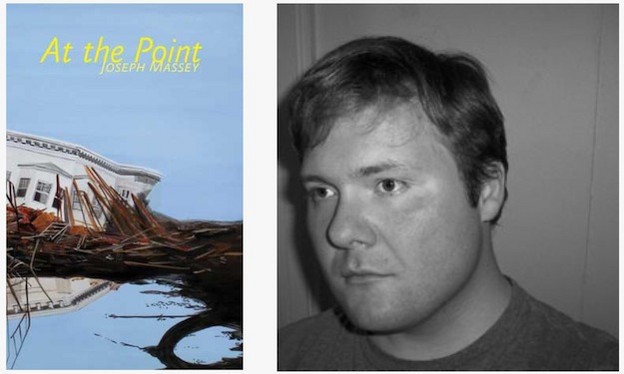The landscape at present
A review of Joseph Massey's 'At the Point'

At the Point
At the Point
Joseph Massey’s second ‘full-length’ collection of poems, At the Point, expands on the work in his previous Areas of Fog. While that collection’s detail of and attention to place finds a natural extension in At the Point, this collection finds not just an increasing awareness of the immediate presence of the Californian coastal landscape where he lives, but an active restraint in the face of the landscape. In the earliest lines of “Found”:
There’s little
to say. The landscape
overwhelms an impulse
to speak. (33)
Here, these first two couplets are devoted to the impulse ‘to say’ — an impulse found throughout At the Point. Yet this impulse is overwhelmed by the sheer fact and immediacy of the landscape. Accordingly, the poem then turns its attention outward, and becomes filled with all manner of sensory experience. The visual sense is marked by the openness of sky and time, while vaguely recognizable sounds filter in to the field of perception:
… Sky clouded
by cloudlessness.
Almost dusk.
A dog or a child’s sound
ricochets through the park.
And the ocean’s drone
drones.
Indeed, the focal point in these lines rests with the presence of both the geographic and sensate terrain, which lends the poem its real force. In Massey’s refusal to speak for the landscape, the world is left with its own sense of immediacy and power. While the “impulse / to speak” is acknowledged in the opening lines, this impulse is restrained in the face of the overwhelming presence of the landscape itself. There’s no melodramatic touch lent to the lines; there’s no symbolic import: the quiet insistence of the world speaks for itself. At the poem’s close, we are left with the acknowledgement that:
… The impulse
is enough.
Though the poem’s core is framed by an admission of the desire ‘to say,’ Massey’s refusal to take something awayfrom the environment by speaking for it and bringing something else into the space of the poem, marks a crucial aspect of Massey’s work in At the Point. Here, it is enough that the impulse itself exists; nothing more need be said.
A similar moment appears in “The Dunes.” After a handful of couplets given to the description of a beach and the debris found there in the morning, Massey writes:
The panic
that would
pull me
under
somehow
recedes as
something’s
shadow
clambers
from a tire-
flattened
tuft of
bush lupine. (66–67)
Again, we find the recognition and tension of the meaning-making self again giving way to the sheer presence and fact of the surrounding environment — in this moment, a shadow clambering “from a tire- // flattened / tuft of // bush lupine.” Massey navigates the temporal space in which the environment and the self take part. In this space, little is fixed. Yet what remains is the fact of the world itself, its presence in the face of all else. In the tension between determining how much of the self must reside in the poem, similar questions arise — how much of this self must appear in the landscape about which Massey is writing? How much of this can actually be conveyed by the language of a poem? And how much of this can appropriately be conveyed by the language of a poem?
Speaking to that, here is Massey’s “Forming” in its entirety:
The languages
we dream —
their dissolution
into morning’s
striations,
what scores
the contours
of the room
we find ourselves
breathing in —
how they leave us
without speech,
in pieces — a part
of the pattern
day consumes
to become. (44)
Massey’s attention to place throughout At the Point rests in the geography of the landscape. And the landscape that Massey’s collection depicts is constantly in a state of having been altered. That language too can alter a landscape, Massey is aware. In his poems, we are conscious of presence — that of the world, and of humanity. We read of debris and trash as often as of the beach, grasses, or sky. Still, in this there is a kind of coexistence.
This is what I find to be one of the singular achievements in Massey’s collection: that for all his attention to presenting the tension between the natural and manmade worlds, there is still an acceptance of each of them. In this way, Massey focuses our attention on the actual, without dragging along a bunch of other baggage. In his poems the manmade and the natural coexist. At the Point gives us a world where we constantly run up against the question of how much is too much. It embodies the impulse to resist going too far. And yet we find that in places where we have, there is still a kind of understanding in a world where:
cobwebs
embody a breeze
neither of us feel. (54)